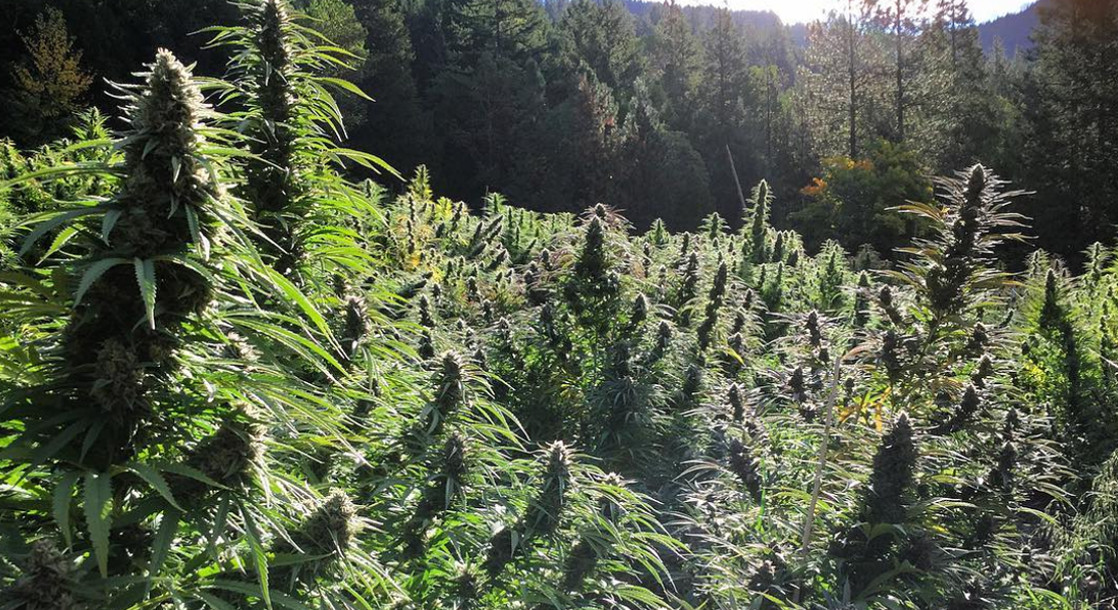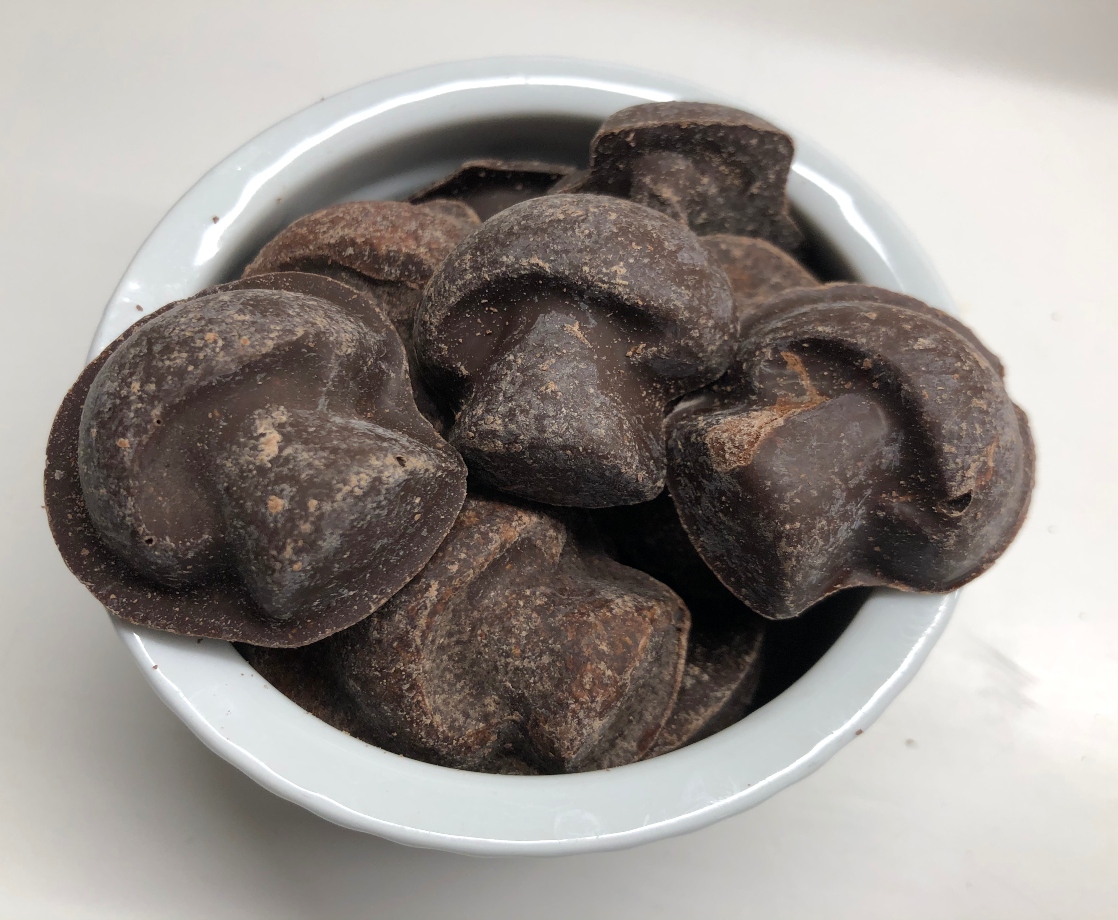Lead photo via Green Source Gardens
At the Emerald Cup in Santa Rosa, Ca. this past weekend, judges granted a few lucky applicants from its pool of outdoor NorCal cannabis cultivators a new prize established just a year ago: the Regenerative Cannabis Farm Award. The existence of the accolade in and of itself represents a leap into the future of cannabis cultivation; going above and beyond vague, catch-all terms like "organic" and "sustainable” increasingly being used by canna-companies to market their products.
According to the judges, regenerative farming is defined as cultivation that "has a healing effect on the environment through developing closed loop systems that go beyond sustainability in that they improve and remediate." The award was designed to be a "catalyst of positive competition," inspiring and motivating cannabis growers to incorporate regeneration into their cultivation technique.
Jesse Dodd, a.k.a. Biovortex — and creator of the Cup’s new award — explains the matrix he and other judges used to grade applicants: "We're honoring farms for their practices instead of their products," he says. Not simply a grading system, this rubric of standards also serve as best practices which any farmer can adopt to improve their environment as well as their crop.
"We're looking at a new paradigm in a new way of farming," explains Nick Mahmood, owner and founder of Green Source Gardens in southern Oregon. A cultivation site should remediate the environment, leaving it in better shape than it was farmed, with a secondary goal of producing food, medicine, or other commodity crops. "A garden's bigger purpose is to act as a water filter and a carbon bank," he says.
One hallmark of regenerative farming is how a cultivator chooses to apply water, and where they source it from. Water should be stored within the cultivation site's immediate landscape, instead of being allowed to run off, Mahmood says. One of best practices, according to the Emerald Cup judging matrix, is to use rainwater catchment and harvesting systems to provide for all irrigation needs, including supplying groundwater to directly to plant roots to enable "dry farming" — rather than solely depending on local or municipal water sources.
"We're looking at incorporating production systems that take drainage and store it in landscapes, so creeks store [more water] and don't flood as hard when it rains," says Mahmood. "One of the [common] problems is pollution and the runoff from [irrigation] systems." When plants fail to absorb nutrients (or chemicals), either because the farmer overdoes it or feeds their plants the wrong stuff, those excess materials pollute the watershed, ultimately making their way to the ocean and contributing to acidification, he explains.
"People shouldn't poison the ground in which they want to grow things," says Mahmood. "If you're concentrating nutrients in one spot, that affects the ecology of the place. The forest should act as a biological filter to clean water as it moves down to the ocean."
As for the cultivation site itself, Emerald Cup judges looked at various criteria regarding soil, nutrition, planting style, pest management, and other markers. They say soil should be protected with mulch — otherwise known as compost or decaying organic material — and the seeds should be planted in the ground, as opposed to, say, in pots.
"We want to see people building soil and sequestering carbon," Dodd says. Supporting healthy soil and carbon sequestration means on-site composting, mulching, not using any kind of nitrate fertilizer, and growing a cover crop — such as buckwheat, clover with fava, bell bean, vetch, peas, or oats — to protect and enrich the soil during the off season. According to the Rodale Institute, a Pennsylvania-based research nonprofit focused on organic farming, regenerative techniques like the use of cover crops and compost can "sequester more carbon than is currently emitted, tipping the needle past 100 percent to reverse climate change."
"On-site resource acquisition" is another tenet of regenerative farming, adds Dodd, such as using leftover cannabis for compost; integrating animals and vermiculture; and establishing "living soil" that supports a synergistic network of useful bacteria, fungi, protozoa, nematodes, slugs, and worms to healthfully provide for plant life.
"We want a perennial polyculture to be part of integrated pest management," Dodd explains. "Creating a biodiversity, bringing in pollinators — the more diversity you have, the more things are kept in balance, the less you need to have other kinds of pest control [like pesticides]."
The idea is to create a system that doesn't require the farmer buy outside ingredients from a gardening store. "We don't go to a grow store to get our nutrients," says Mahmood. "Our grow store becomes the forest and our barn. Our fertility is a result of our animals and the environment of the farm."
Another principle of regenerative farming is abstaining from the use artificial light to extend crop days or get a jump on the seasons, as many cannabis farmers do to manipulate plant yield or other properties. The more that a farmer takes nature’s lead, following the natural cycles of daylight and climate, the smaller their carbon footprint will be.
Of course, the success of regenerative systems becoming more commonplace depends on an educated consumer. "We want to design [cannabis] businesses around biological remediation and restoration of the landscape," says Mahmood. "The consumer should look up the farm — not just asking do they grow the biggest and dankest flowers, but are they trying to make positive change? Steer money in the direction of better practices instead of mindless consumption that does more pollution and damage than anything."
Unfortunately, regenerative practices aren't as popular yet among cannabis farmers, not to mention those of other crops, as they could be. Those who do practice regenerative cultivation serve as a model that can work for anybody, says Karla Avila, owner and operator of Flower Daze Farm in Trinity County, and one of the winners of this year's Regenerative Cannabis Farm Award. "With cannabis, one of the things that's happening as heritage farmers are able to come out of the shadows because of legalization [is that] we can share information and be part of a larger farming community," she says. "Because so many people have been doing this in their own neck of the woods and hiding out, we haven't historically been able to easily share these practices and knowledge outside our immediate communities."
Regenerative farming isn't a new innovation, but it's not standard practice, Avila says. However she thinks the state's new regulations will promote better practices, forcing farmers to change their cultivation techniques. "The regulation on our water use and our runoff of nutrients into the watershed, I think, is really propelling a lot of people think more carefully about what inputs they're using and other farming practices like mulching," says Avila. Another aspect is lab testing, she adds. "Obviously pesticides will become a thing of the past, but unfortunately with the testing, you can still get by with conventional organic [practices] and use [agricultural] inputs that are not sustainably or ethically sourced."
Even if environmental sustainability isn't a farmer's primary concern, these regenerative techniques could improve their cannabis crop overall. As soil quality gets better, plant fertility, yield, and even flavors created by terpene profiles all improve, says Avila. "The whole spectrum of quality goes up in every way." Weed that’s better for you as well as the environment — what’s not to like?











